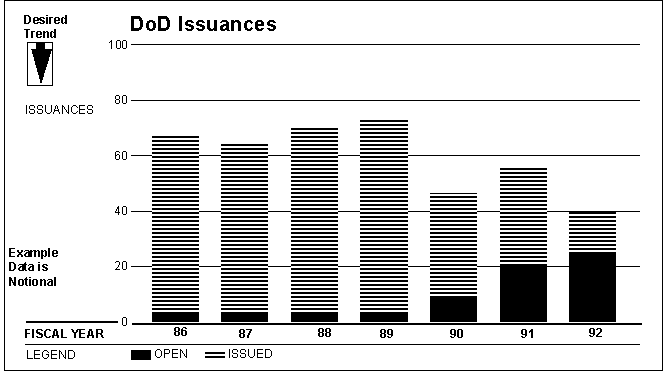 Air Force
Air Force Intelligence and Security Doctrine
 Air Force
Air Force Information Management
AIR FORCE INFORMATION MANAGEMENT
____________________________________________________________________________________________________
1.1. The Air Force recognizes that information is a valuable Department of Defense (DoD) resource. Skillful management of this resource saves money and helps people work efficiently. It ensures the right customers get information quickly. This directive establishes policy to manage information from its creation through its disposition, ensuring it is available to support the Air Force mission while providing for the public's right to access.
1.2. The Air Force will:
1.2.1. Manage information as cost effectively as possible while providing quality service to customers.
1.2.2. Use standard publications and forms to carry out congressional, DoD, or Air Force policy and procedures.
1.2.3. Maintain processes for transmitting information, including timely, economical delivery of personal and official mail. Standard formats will be used for official communications.
1.2.4. Manage, control, and minimize the burden of collecting and reporting information.
1.2.5. Limit records (automated and manual) to those needed for official business and manage them according to applicable laws and Federal regulations. The Air Force will publish its rules and notices in the Federal Register when they have a substantial and direct impact on the public.
1.2.6. Make its records available to the public under the Freedom of Information Act. It will also safeguard personal information under the Privacy Act and give access or amend personal information in a system of records.
1.2.7. Issue written orders to direct command actions or announce command decisions.
1.3. This directive establishes the following responsibilities and authorities:
1.3.1. Statutory officials of the Office of the Secretary of the Air Force will delegate and assign statutory authority in Secretary of the Air Force Orders.
1.3.2. The Director of Information Management (SAF/AAI), Office of the Administrative Assistant to the Secretary of the Air Force (SAF/AA), provides policy for managing information throughout the Air Force.
1.3.3. The Director of Corporate Information (CI) at Air Force Materiel Command (AFMC/CI) will oversee IM functions related to research and development. AFMC/CI will coordinate its oversight with SAF/AAI.
1.3.4. The Director of IM at all levels and Chief, Base IM, will enforce all federal statutory and rgulatory requirements and will publish instructions to guide subordinate organizations. These people must work with other functional communities to acquire, train, classify, use, and develop the careers of Air Force information management personnel.
1.3.5. Air Force functional managers at all levels are responsible for completing the information planning directed by the Paperwork Reduction Act, The Federal Information Resources Management Regulation (FIRMR), and Office of Management and Budget (OMB) Circular A-130. This planning will determine ways to process, transmit, use, provide for access to, send out, store, and ultimately dispose of information in the automated or manual systems.
1.4. Related information management policies appear in Air Force information management publications in the 37 series (now in the 4, 5, 6, 7, 9, and 10 through 13 series, and AFP 900-35), and DoD publications in the 50, 51, 53, 54, 77, 79, 80 through 89 series. The authority for the functions and responsibilities of information management originates in the United States Code and Public Law:
1.4.1. Title 44, United States Code, Chapters 5, 15, and 31; and Title 41, Code of Federal Regulations, Chapter 201, FIRMR; address correspondence; forms; distribution; directives; mail; records; printing; and information management aspects of information resources management.
1.4.2. Title 32, Code of Federal Regulations, Part 806, Air Force Freedom of Information Act Program, and Part 806b, Air Force Privacy Act Program; and Title 36, Code of Federal Regulations, Chapter 12, Parts 1220 to 1238; reference records; micrographics, and electronic records.
1.4.3. Title 5, United States Code, Section 552 and 552a, cover public information and records maintained on individuals.
1.4.4. Title 39, United States Code, Chapter 34, references postal services.
1.4.5. Public Law 96-511, The Paperwork Reduction Act of 1980; and Public Law 99-591, The Paperwork Reduction Reauthorization Act of 1986; Title 44, U.S.C, Chapter 35, Coordination of Federal Information Policy; Title 5, CFR, Part 1320, Control of Paperwork Burdens on The Public; task the Federal Government to minimize and control the burden and cost of collecting, maintaining, using, and disseminating information, both within the Federal Government and on the public.
1.4.6. Title 41, CFR, Chapter 201, FIRMR, describes regulations and procedures about information management. It also presents in a life-cycle format regulatory policy about acquiring, managing, and using resources for automated data processing and telecommunications.
1.4.7. OMB Circular A-130 establishes policies that apply to the information activities of all Federal Government agencies.
1.5. This policy directive implements Department of Defense (DoD) Directive 8000.1, Defense Information Management (IM) Program, October 27, 1992.
1.6. See attachment 1 for measures of policy success.
A1.1.1. Timely Mail Delivery to Representative Oversea Locations. One of the most crucial information management services is the delivery of official and personal mail. Oversea mail delivery can be complex, so the APO mail system must be monitored for irregularities (figure A1.1). Standards for time in transit between locations are established by the US Postal Service. Transit times are published in the DoD Transit Time Information System for Military Mail (TTISMM). The Military Postal Service Agency furnishes the TTISMM providing data on mail delivery times for use in monitoring the success of meeting delivery standards. Historically, the goal has been to meet or better standard delivery times for 85 percent of the mail. The transit time standards for Ramstein AB, Germany; Howard AB, Panama; and Misawa AB, Japan are 7 days each; and Riyadh, Saudi Arabia, 8 days. Analysis of this metric will facilitate IM management action to maintain or improve delivery service.
A1.1.2. Air Force Costs for Reporting Requirements (Internal and External). Use RCS: SAF-AAI (SA)9223, Semiannual Reports Control Symbol (RCS) Status Report, to collect the data for internal reporting requirements. Whenever public information collections are approved, the Air Force will collect costs related to external reporting requirements. Figure A1.2 shows the tracking of costs for internal and external collections. The first bar that identifies cost to the Government pertains only to public information collections.
A1.1.3. DoD Issuances. DoD publications often require the Air Force to publish implementing guidance. Figure A1.3 shows the degree to which the Air Force activities implement guidance for carrying out DoD policy.

Figure A1.1. Sample Metric of Timely Mail Delivery to Representative Oversea Locations.

Figure A1.2. Sample Metric of Air Force Reporting Requirements Costs.

Figure A1.3. Sample Metric of DoD Issuances.